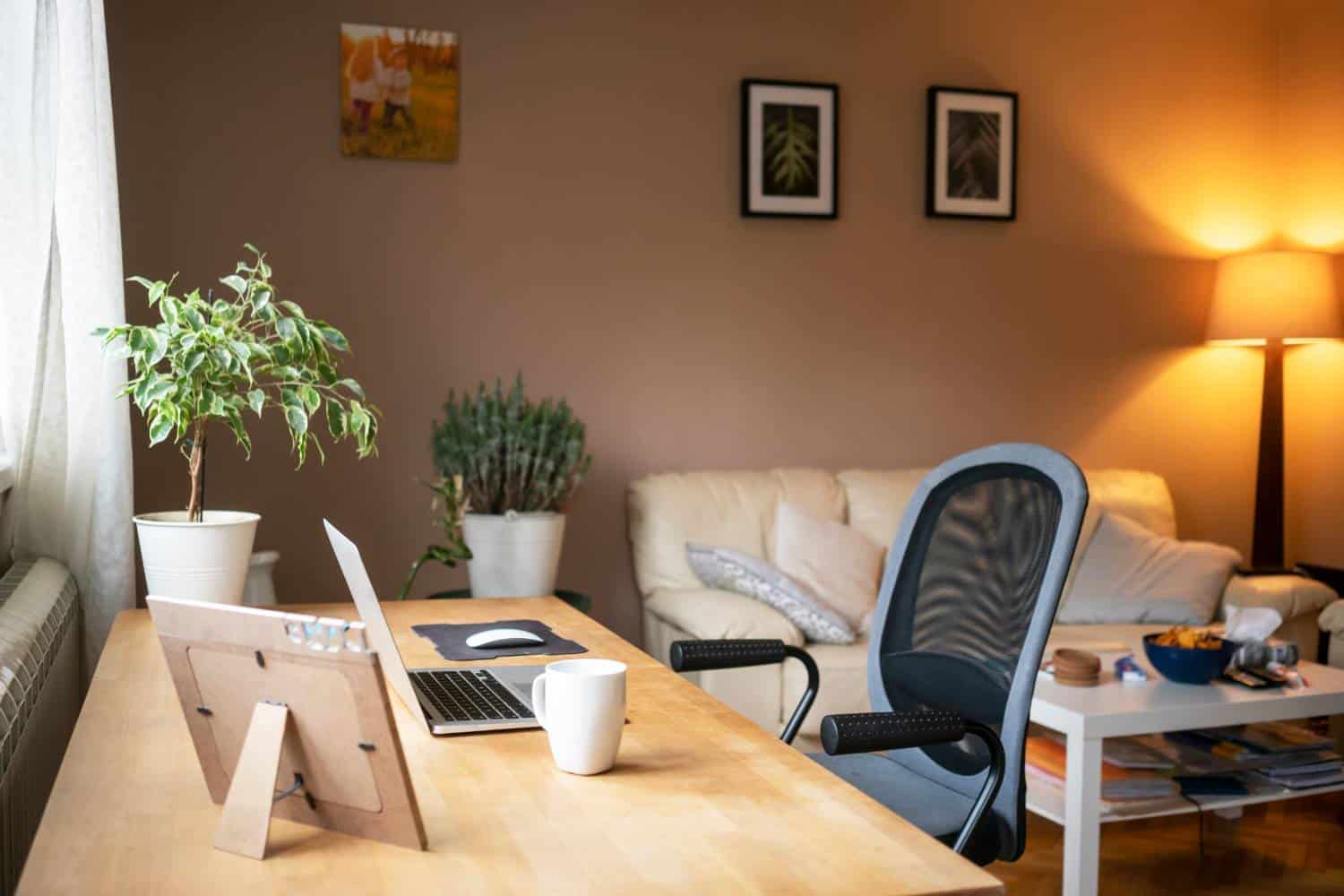The evolution of home offices in a post-pandemic world has redefined how people work, reshaping traditional office environments into adaptable spaces tailored to diverse needs. This transformation has sparked innovation in workplace design, merging functionality, comfort, and aesthetics. Below, we delve into the key aspects shaping home and office environments today.
Let's get straight to the point
The evolution of home offices in a post-pandemic world has transformed traditional workspaces into adaptable environments that prioritise functionality, comfort, and sustainability. Modern office design focuses on integrating natural light, improving air quality with ventilation and biophilic elements, and embracing ergonomic furniture for increased productivity and well-being.
Technology plays a central role, with hybrid offices blending in-person collaboration and virtual meetings, supported by smart setups and refined video conferencing etiquette. Personal touches and sustainable features like green walls and moveable furniture further enhance these spaces. Hybrid offices address challenges such as minimising distractions and maintaining work-life balance through thoughtful layouts and clear boundaries.
These trends, which foster creativity, collaboration, and flexibility, reflect a significant shift in workplace design. They meet the demands of a hybrid workforce and ensure a healthier, more connected post-pandemic era. The future of workspaces combines innovation and adaptability, offering endless growth opportunities.
Designing Effective Office Space
In the post-pandemic era, creating functional and appealing workspaces is critical. Whether in shared spaces or private offices, the focus is crafting office layouts that inspire creativity while accommodating health and safety protocols.
Importance of Natural Light
Natural light is a vital component of modern office design. By incorporating natural elements like large windows or skylights, workspaces become more inviting, reducing reliance on artificial lighting. Ample natural light boosts productivity and enhances well-being, reducing stress and fatigue.
Air Quality and Ventilation
Post-pandemic workplace trends underscore the importance of air quality. Proper ventilation systems that improve air quality are now integral to office design. In work environments, indoor plants and green walls enhance air circulation while incorporating biophilic design elements.
Technology and Virtual Meetings
The reliance on technology has soared in the post-pandemic workplace, with virtual meetings becoming commonplace. Office design now emphasises integrating cutting-edge tech into workspaces.
Integrating Technology into Your Workspace
Modern office spaces often feature video conferencing tools, smart screens, and ergonomic setups to accommodate remote work. Many employers focus on hybrid office models, where technology bridges the gap between in-person workers and remote teams.
Virtual Meeting Etiquette
As virtual meetings remain a staple, understanding etiquette is key. From muting microphones when not speaking to ensuring video conferencing setups have proper lighting and clear backgrounds, these small adjustments can make a significant difference in maintaining professionalism.
Creating a Productive Workspace
Productivity is at the heart of the evolution of home offices in the post-pandemic world. Designing a workspace that balances comfort with efficiency requires careful attention to detail.
Ergonomic Furniture
Ergonomic furniture is essential for long hours of work. Comfortable seating, adjustable desks, and moveable furniture are increasingly popular in modern offices. These elements reduce physical strain and contribute to increased productivity.
Personal Touches
Incorporating personal items, such as family photos or inspirational quotes, adds a sense of individuality to office spaces. These touches and natural materials like wooden desks or stone finishes create a warm and inviting atmosphere.
Overcoming Challenges
Despite advancements, challenges such as distractions and maintaining work-life balance persist in the new reality of hybrid work environments.
Minimising Distractions
Private offices or designated work zones in open-plan layouts help reduce distractions. Noise-cancelling tools and well-thought-out office layouts ensure employees can focus without interruptions, even in shared spaces.
Maintaining Work-Life Balance
Many employers prioritise balancing professional and personal life. Clear boundaries, such as designated "work hours" and separate spaces for work and relaxation, support employees in managing their work-life effectively.
Sustainable and Adaptable Design
Sustainability has become a cornerstone of office design in the post-pandemic world. Biophilic elements such as indoor plants, natural materials, and green walls are increasingly integrated into office environments. Adaptable features like hot desking and moveable furniture further allow spaces to cater to different needs and foster serendipitous encounters among employees.
Conclusion
The evolution of home offices in a post-pandemic world reflects a broader shift in workplace design, blending comfort, technology, and sustainability. From embracing natural light and improving air quality to fostering human connection through hybrid workspaces, these trends underscore the importance of adaptability in the post-pandemic era.
By focusing on well-being and productivity, companies and individuals alike can craft spaces that meet the demands of the modern office and inspire creativity and collaboration.
By integrating the insights shared above, the transformation of work environments continues to adapt to the challenges and opportunities of our times. With thoughtful planning and innovative design, the future of workspaces looks brighter than ever.
Frequently Asked Questions
Key features include ergonomic furniture, natural light, improved air quality, biophilic elements like indoor plants, and technology integration to support hybrid work and video conferencing.
Natural light enhances well-being, reduces stress, and alleviates fatigue. It also creates a more inviting work environment and reduces reliance on artificial lighting, ultimately boosting productivity.
Technology enables seamless hybrid work, supports virtual meetings, and enhances efficiency through video conferencing tools, smart screens, and ergonomic setups tailored to remote and in-person collaboration.
Combining personal touches, natural materials, and well-planned office layouts ensures a productive yet comfortable workspace that maintains professionalism and encourages creativity.
Eco-friendly spaces that prioritise well-being and adaptability can be sustainable by incorporating green walls, indoor plants, natural materials, and adaptable furniture.


